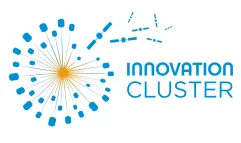June 25, 2024, Thales Alenia Space signed a contract with the European Space Agency (ESA) to support its zero-debris objectives for 2030 through immediate evolutions to Europe’s spacecraft buses, starting with Thales Alenia Space’s multi-mission MILA platform. This new-generation bus will enable satellites to burn up in Earth’s atmosphere at the end of their life, significantly reducing proliferation of space debris.
Space programs have always played a leading role ensuring a sustainable future for our planet, collecting key data on its land surfaces, oceans and atmosphere to better mitigate climate-related natural disasters. Today, attention is focusing on eco-friendly and sustainable use of outer space. Given exponential growth in satellites and debris objects circling Earth, there is now a real consensus in Europe on preserving low Earth orbit for future missions.

From left to right: Francesca Cirillo on behalf of Airbus Defence and Space, Christiane Bergemann for OHB and Pierre Dandré for Thales Alenia Space. © ESA
Developing a “zero-debris” spacecraft bus is crucial to meeting new space debris mitigation requirements and guaranteeing the feasibility, affordability and sustainability of ESA’s future Earth observation missions. Under the contract announced today, Thales Alenia Space is tasked with building a bus that will burn up on re-entering Earth’s atmosphere, with the goal of simplifying satellite end-of-life systems and operations, limiting environmental impacts by design, increasing resilience and more closely monitoring systems to avoid failures in orbit while mitigating risks to the space environment.
As lead contractor for the Copernicus program’s CHIME, ROSE-L and CIMR missions, all based on its MILA product line, Thales Alenia Space is driving ESA’s Zero Debris approach for 2030, aiming to limit debris proliferation in Earth and lunar orbit for all future missions, programs and activities.
About the Copernicus program

Copernicus ©Thales Alenia Space
The European Commission’s Copernicus environmental monitoring program is the most ambitious of its kind in the world, with 12 families of Sentinel satellites surveying Earth, its topography, seas, lakes, oceans, and polar regions. Copernicus also encompasses climatology missions and programs measuring human-induced CO2 emissions or affording new applications to foster sustainable agriculture and biodiversity. A program of this scale is key to enabling Europe to better anticipate the consequences of global warming so that we can safeguard our planet.
Thales Alenia Space is a major contributor to 11 of the program’s 12 missions. The satellites are built by European prime contractors for the European Space Agency (ESA). Thales Alenia Space is prime contractor for the first-generation Sentinel-1 and Sentinel-3 satellite families.
We are also responsible for the Sentinel-2 image ground segment, and we helped to build the imaging spectrometer on Sentinel-5P and the Poseidon-4 radar altimeter on Sentinel-6. In 2020, Thales Alenia Space was awarded five contracts for the six new Copernicus Expansion missions, as prime contractor for the CIMR, ROSE-L and CHIME satellites, and supplier of the CRISTAL and CO2M mission payloads.


